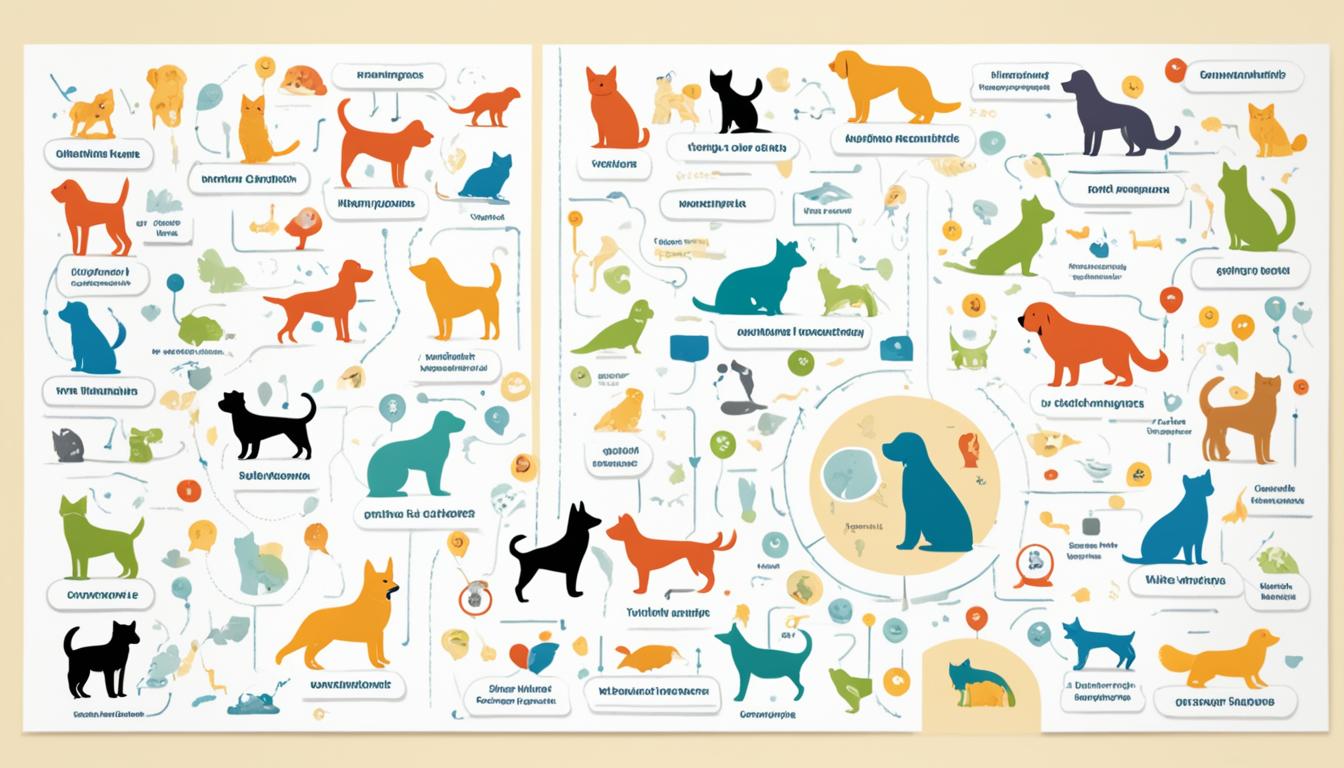Emotions are critical for humans, not only feeling and expressing them, but also reading the emotional expressions of others. For a long time, this ability was thought to be exclusive to people; however, there is now evidence that other animals also rely on emotion perception to guide their behavior and to adjust their actions in such way as to guarantee success in their social groups. This is the case for domestic dogs, who have tremendously complex abilities to perceive the emotional expressions not only of their conspecifics but also of human beings.
Dogs can respond functionally to emotional expressions and can use the emotional information they obtain from others during problem-solving, that is, acquiring information from faces and body postures allows them to make decisions. The emergence and the development of the ability to read emotions from individuals bring clear evolutionary advantages. Being able to recognise the emotional expressions and states of a different species, for instance humans, might be vital for functional social interactions. Living in a complex social world requires sophisticated knowledge about other individuals and this information is what allows animals to predict the behavior of others.
Key Takeaways
- Emotions are critical for both humans and animals, guiding behavior and social interactions.
- Domestic dogs have the ability to perceive and respond to the emotional expressions of their conspecifics and humans.
- The capacity to read emotions from others provides clear evolutionary advantages, allowing animals to navigate complex social environments.
- Understanding the emotional intelligence of pets can lead to improved human-animal bonds and enhanced animal welfare.
- Ongoing research is exploring the cultural and developmental factors that influence emotion recognition in animals.
Introduction to Pet Emotions and Behavioral Signals
The science of pet emotions reveals that emotions play a crucial role in the lives of our furry companions. Emotions can be broadly defined as complex, multifaceted psychological phenomena that influence the management and control of behavior. For dogs, these emotional experiences are not just passive; they are active subjects for expressing their emotions in a communicative way and for recognizing the emotions and emotional expressions of others.
The Importance of Emotions in Animal Behavior
Emotions have a profound impact on how events and experiences are registered in an animal’s memory. The quality and intensity of emotional experiences can significantly influence an animal’s decision-making, problem-solving, and overall social interactions. Understanding the role of animal psychology and pet behavior analysis is essential for deciphering the emotional lives of our pets.
The Evolutionary Advantages of Emotion Perception
The ability to perceive and respond to emotional cues can provide significant evolutionary advantages, especially for social species like dogs. Being able to accurately read the emotional intelligence in animals and anticipate the behavior of others, whether conspecifics or humans, can enhance an animal’s chances of survival and reproductive success. This interspecies emotional connection has played a crucial role in the development of the unique bond between humans and dogs.
The Unique Relationship Between Humans and Dogs
Dogs have an exceptional ability to interact with and understand human behavior, including our emotional expressions. This human-animal bond has been shaped by the long history of co-evolution between humans and dogs, allowing them to develop specialized cognitive and communicative skills that facilitate mutual understanding. Decoding pet emotions and interpreting pet body language is essential for strengthening this remarkable interspecies relationship.
Dogs as Readers of Human Emotions
As the long-standing companions of humans, domestic dogs have developed a remarkable sensitivity to human communicative cues. Even from a very young age or with limited experience with people, dogs have shown an exceptional ability to read and respond to a variety of human signals, such as pointing and looking. This keen sensitivity suggests that the human-animal bond between dogs and their human families plays a crucial role in their social and cognitive development.
Dogs’ Sensitivity to Human Communicative Cues
Numerous studies have demonstrated that dogs are attuned to the attentional state of their human companions, adjusting their behavior based on whether the person is focused on them or distracted. Dogs have also been found to be sensitive to ostensive directional signals, showing improved performance in social tasks when communicative cues are presented in combination with them, rather than when the cues are not directed at the dog.
The Role of Cultural Context and Exposure
The ability of dogs to read human emotions and communicative cues is not solely innate; it is also influenced by the cultural context and level of exposure that dogs have to their human counterparts. Research has shown that dogs from cultures where they are more closely integrated into human life and considered highly important tend to be better at recognizing human emotions, even without extensive personal experience with dogs. This suggests that passive exposure and a positive cultural attitude towards dogs can play a significant role in shaping their emotional understanding.

The Science of Pet Emotions
The study of animal emotions and their perception has gained significant momentum in recent years. While emotions were once thought to be uniquely human traits, research has revealed that non-human animals, including our beloved pets, also possess the capacity for complex emotional experiences. This newfound understanding has opened up a fascinating domain of exploration – the science of pet emotions.
Defining Emotions in Animals
Emotions can be broadly defined as multifaceted psychological phenomena that influence the management and control of behavior. In the context of animal psychology and pet behavior analysis, researchers have delved into the intricacies of emotional intelligence in animals, seeking to unravel the nuances of emotional expression and perception within the human-animal bond.
The Functional Approach to Emotion Perception
A functional approach to emotion perception in animals emphasizes the evolutionary advantages and practical implications of this ability. Studies have shown that dogs present cognitive biases when exploring faces and exhibit differential visual processing when presented with human or dog faces. This sensitivity to emotional cues expressed through body postures, facial expressions, vocalizations, and odors can significantly influence the behavior of our canine companions.
By decoding pet emotions and understanding pet feelings, we can gain valuable insights into the inner lives of our furry friends and better navigate the complexities of animal cognition and feelings. This knowledge can lead to more meaningful human-animal interactions and enhanced pet stress and anxiety management, ultimately strengthening the interspecies emotional connections that enrich our lives.
Responding to Emotional Expressions
The ability of dogs to perceive and respond to emotional cues is a fascinating aspect of the science of pet emotions and animal psychology. Studies have shown that dogs are particularly sensitive to human emotions, discriminating and exhibiting differential responses to emotional cues expressed through body postures, facial expressions, vocalizations, and even odors.
Dogs’ Ability to Discriminate Emotional Cues
Researchers have discovered that dogs present cognitive biases when exploring faces and show distinct visual processing when presented with human or dog faces. This suggests that dogs have the ability to decode and interpret the emotional expressions of both their own species and humans, a remarkable feat of emotional intelligence in animals.
The Influence of Emotional Cues on Dog Behavior
The impact of emotional cues on dog behavior is equally compelling. Studies have demonstrated that dogs exhibit different responses depending on the emotional valence of the cues they are exposed to, highlighting the profound influence of emotional information on their cognitive processes and decision-making. This underscores the critical role that pet emotions and animal cognition play in shaping the human-animal bond and interspecies emotional connections.

Using Emotional Information Functionally
The science of pet emotions reveals how animals, particularly domestic dogs, can leverage emotional cues to navigate their social environments effectively. A functional approach to emotion perception highlights the evolutionary significance of this ability, underscoring how it serves as an adaptation for handling the complexities of social interactions.
Problem-Solving and Emotional Information
When it comes to problem-solving and decision-making, the use of emotional information from conspecifics (members of the same species) and heterospecifics (members of different species) can provide dogs with a distinct cognitive advantage. By decoding pet emotions and interpreting pet body language, dogs can anticipate the behavior of others and respond accordingly, enabling them to make strategic choices that optimize their chances of success within their social groups.
The Evolutionary Significance of Emotional Perception
The evolutionary significance of this ability to understand pet feelings and animal cognition and feelings lies in its potential to enhance interspecies emotional connections and human-animal bond. By decoding pet body language and uncovering pet emotions, dogs can navigate the complexities of their social environments, including interactions with humans, more effectively, leading to improved animal welfare and stronger, more rewarding anthropomorphism in pets.
The Science of Pet Emotions
Dogs were the first domesticated animal, with humans and dogs sharing more than 40,000 years of social interactions and life together. According to the
co-domestication hypothesis
, this process allowed humans and dogs to evolve special emotional signals and cognitive skills that favor mutual understanding.
We know, for example, that over the millennia, dogs have evolved the ability to understand human words, iconic signs, and other gestures, and
the development of emotional understanding in dogs
has been a key part of this process. Research has shown that dogs can even use tone of voice and facial expressions to recognize human emotions, suggesting a deep level of interspecies emotional connection.
The ability of dogs to perceive and respond to human emotional cues highlights the remarkable cognitive capabilities that have developed through the long-standing relationship between humans and their canine companions. This interspecies emotional connection is a testament to the science of pet emotions and the complex inner lives of our furry friends.
Decoding Pet Body Language
Unraveling the mysteries of pet emotions often begins with deciphering their body language. Dogs, in particular, have a rich repertoire of facial expressions and physical cues that offer insights into their inner states. Studies have shown that dogs present cognitive biases when exploring faces and show differential visual processing when presented with human or dog faces. This suggests a heightened sensitivity to emotional information conveyed through facial features.
Interpreting Canine Facial Expressions
Researchers have empirically demonstrated that dogs are particularly sensitive to human emotions. They can discriminate and respond differently to emotional cues expressed through body postures, facial expressions, vocalizations, and odors. Interestingly, regardless of age or experience with dogs, all participants were able to identify anger and happiness in dogs reliably. While this may suggest an innate ability favored by the co-domestication hypothesis, it’s also possible that humans learn to recognize these emotions quickly, even with limited exposure.
Recognizing Stress and Anxiety in Pets
Beyond facial expressions, understanding the subtle nuances of your pet’s body language can also reveal their emotional state. Recognizing the signs of stress and anxiety, such as tense muscles, dilated pupils, or a tucked tail, allows you to provide the necessary comfort and support. By decoding pet body language and emotional cues, you can foster a deeper connection with your furry companion and ensure their overall well-being.

The Human-Animal Bond and Emotional Intelligence
The interspecific relationship between dogs and humans seems to be unique within the animal kingdom, with no other domestic animal having shared more of their evolutionary history in close contact with humans. This deeply rooted bond has profound implications, offering great social, health, and economic relevance as we continue to uncover the depth of interspecies emotional connections.
Interspecies Emotional Connections
Research has shown that dogs can use subtle cues like tone of voice and facial expressions to recognize and respond to human emotions, suggesting a remarkable level of interspecies emotional intelligence and understanding. This ability to decode pet emotions and read body language likely evolved alongside the close coexistence of dogs and humans over millennia, facilitating more nuanced and rewarding interactions.
Uncovering the Inner Lives of Pets
As we continue to study the science of pet emotions and delve into the cognitive and emotional capacities of our animal companions, we gain deeper insights into their inner lives and the ways in which they experience the world. This growing understanding can profoundly impact how we care for and interact with our beloved pets, fostering more empathetic and fulfilling relationships.

Applications and Implications
Understanding the emotional intelligence and inner lives of pets has important applications for improving human-animal interactions and enhancing animal welfare. By learning to better recognize and respond to the emotional cues and body language of our furry companions, we can build stronger, more rewarding bonds, and create environments that better meet their physical and psychological needs.
Improving Human-Animal Interactions
Developing a deeper understanding of pet emotions and behavior can lead to more effective communication and stronger connections between humans and their animal companions. By being attuned to the subtle signs of stress, anxiety, or happiness in our pets, we can adjust our own actions and reactions to create a more positive and enriching interaction. This, in turn, can foster a greater sense of trust, understanding, and mutual respect between people and their pets.
Enhancing Animal Welfare
Applying the science of pet emotions can also have a significant impact on improving animal welfare. By recognizing the emotional needs and behavioral signals of our pets, we can ensure that their living environments, care routines, and interactions with humans are designed to promote their overall well-being. This may include providing appropriate stimulation, minimizing sources of stress, and responding to their emotional cues in a way that enhances their quality of life.
Ultimately, understanding the emotional intelligence in animals, the human-animal bond, and the inner lives of pets can lead to more compassionate and effective caregiving, benefiting both the animals and the humans who share their lives.
Challenges and Future Directions
While the current research has revealed intriguing insights into the science of pet emotions, animal psychology, and our ability to decode pet body language, there are still important challenges and exciting future directions to explore.
Cultural Variations in Emotion Recognition
The ability to recognize pet emotions appears to be influenced not only by individual experiences but also by cultural factors. A dog-positive cultural background, where dogs are deeply integrated into human life and highly valued, can lead to a greater level of passive exposure and increased interest in understanding canine emotional intelligence. This suggests that anthropomorphism in pets and the human-animal bond play a crucial role in shaping our perceptions and interpretations of pet behavior and emotions.
Integrating Real-Life Stimuli and Body Expressions
Much of the current research on pet emotions has relied on controlled laboratory studies, using static images or video clips to assess animal cognition and feelings. While these studies have provided valuable insights, it’s important to also explore real-life stimuli and body expressions to gain a more comprehensive understanding of how people interpret and respond to pet emotions in natural settings. Integrating dynamic, contextual information and examining interspecies emotional connections will be crucial for unlocking the full complexity of pets’ inner lives and uncovering pet emotions.
By addressing these challenges and pushing the boundaries of animal emotion research, we can gain deeper insights into the science of pet emotions and develop more effective strategies for decoding pet emotions, understanding pet feelings, and improving human-animal interactions. The future holds exciting possibilities for further exploration and discovery in this rapidly evolving field.
Conclusion
The science of pet emotions reveals the remarkable emotional intelligence and intricate inner lives of our furry companions. From the evolutionary advantages of emotion perception to the unique bond between humans and dogs, this field of study has uncovered the profound depth of the human-animal bond and the emotional cognition that underpins it. By learning to better decode pet body language and interpret pet emotions, we can forge even stronger connections with our pets and improve their overall animal welfare.
As the research continues to explore the emotional intelligence in animals and the anthropomorphism in pets, we gain a deeper appreciation for the animal psychology and pet behavior analysis that shape the pet stress and anxiety our companions experience. This knowledge empowers us to become more attuned to the animal cognition and feelings of our pets, enabling us to create environments that cater to their unique emotional needs and foster even richer interspecies emotional connections.
The journey of uncovering the pets’ inner lives and decoding pet emotions is an ongoing one, with exciting future directions in the field of the science of pet emotions. By embracing this understanding, we can elevate the human-animal relationship to new heights, strengthening the bonds that bring so much joy and fulfillment to our lives.
FAQ
What is the role of emotions in animal behavior?
Emotions play a crucial role in the management and control of animal behavior. Emotions can influence how events are registered in an animal’s memory and allow them to anticipate the behavior of others in their social group.
What are the evolutionary advantages of emotion perception in animals?
Being able to recognize the emotional expressions and states of others, including different species, can provide clear evolutionary advantages. It allows animals to predict the behavior of others and adjust their actions to succeed in their social environment.
How are dogs sensitive to human communicative cues?
Domestic dogs are known to be very good readers of human communicative cues, such as pointing and looking, even from a young age or with little experience with people. They are also sensitive to people’s attentional state and can understand communicative cues better when presented with ostensive directional signals.
How do dogs discriminate and respond to human emotional cues?
Studies have shown that dogs are particularly sensitive to human emotions. They can discriminate and show differential responses to emotional cues expressed through body postures, facial expressions, vocalizations, and odors. These emotional cues can influence the behavior of dogs.
What is the functional approach to understanding emotion perception in animals?
The functional approach refers to the history of a behavioral trait and its consequences. The use of emotional information from conspecifics and heterospecifics (such as humans) may be seen as an adaptation for handling the complexities of the social environment, regardless of its underlying causes.
What is the co-domestication hypothesis and how does it relate to the human-dog relationship?
The co-domestication hypothesis suggests that the process of domestication allowed humans and dogs to evolve special emotional signals and cognitive skills that favor mutual understanding. This long history of shared social interactions and life together has led to dogs’ ability to recognize human emotions through tone of voice, facial expressions, and other cues.
How can cultural and developmental factors influence the ability to recognize pet emotions?
A dog-positive cultural background, where dogs are closely integrated into human life and considered highly important, can result in a higher level of passive exposure and increased inclination and interest in dogs, making humans better at recognizing dogs’ emotions even without a history of personal dog ownership.
How can understanding pet emotions and body language improve human-animal interactions and animal welfare?
By learning to better recognize and respond to the emotional cues and body language of our furry companions, we can build stronger, more rewarding bonds, and create environments that better meet their physical and psychological needs, ultimately improving human-animal interactions and enhancing animal welfare.
Source Links
- https://www.ncbi.nlm.nih.gov/pmc/articles/PMC10426098/
- https://www.sciencedaily.com/releases/2019/11/191111105001.htm
- https://www.ncbi.nlm.nih.gov/pmc/articles/PMC4494300/

